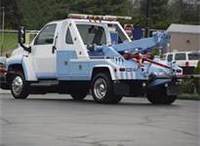As Roadside Assistance Calls Exceed 18 Million for 2012, AAA Urges Motorists to Get Vehicle Checkup
 |
The nation's largest motor club reminds drivers that October is AAA Car Care Month, an ideal time for a seasonal vehicle checkup to ensure worry-free driving
ORLANDO, FL--Oct. 2, 2012: With more than 18 million AAA roadside assistance calls recorded January through August 2012 for the U.S. and Canada, AAA reminds motorists that cars need periodic checkups to maintain safety and maximize efficiency.
"Whether you're expecting cooler temperatures, snow, rain or simply a little less sunshine, regular maintenance and seasonal checkups can help prevent unexpected repair costs in the future," said John Nielsen, director, AAA Automotive Engineering and Repair. "Properly preparing your vehicle for the next season of driving is essential for the safety of all passengers and will greatly decrease the chances of your vehicle letting you down."
AAA recommends that motorists use a simple checklist to determine their vehicle's fall and winter maintenance needs. Many of the items on the list can be inspected by a car owner in less than an hour, but others should be performed by a certified technician.
Motorists can identify reliable, high-quality repair shops with certified technicians by looking for the AAA Approved Auto Repair sign. These facilities must meet and maintain high professional standards for customer service, technician training, tools, equipment, warranties and cleanliness. Nearby shops can be located at AAA.com/repair.
Winter Car Care Checklist
Battery and Charging System -- Have the battery and charging system tested by a trained technician. A fully charged battery in good condition is required to start an engine in cold weather. AAA members can request a visit from a AAA Mobile Battery Service technician who will test their battery and replace it on-site, if necessary. AAA Approved Auto Repair shops can also test and replace weak batteries.
Battery Cables and Terminals -- Make sure the battery terminals and cable ends are free from corrosion and the connections are tight.
Drive Belts -- Inspect the underside of accessory drive belts for cracks or fraying. Many newer multi-rib "serpentine" belts are made of materials that do not show obvious signs of wear; replace these belts at 60,000-mile intervals.
Engine Hoses -- Inspect cooling system hoses for leaks, cracks or loose clamps. Also, squeeze the hoses and replace any that are brittle or excessively spongy feeling.
Tire Type and Tread -- In areas with heavy winter weather, installing snow tires on all four wheels will provide the best winter traction. All-season tires work well in light-to -moderate snow conditions provided they have adequate tread depth. Replace any tire that has less than 3/32-inches of tread. Uneven tire wear can indicate alignment, wheel balance or suspension problems that must be addressed to prevent further tire damage.
Tire Pressure -- Check tire inflation pressure on all four tires and the spare more frequently in fall and winter. As the average temperature drops, so will tire pressures -- typically by one PSI for every 10 degrees Fahrenheit. The proper tire pressure levels can be found in the owner's manual or on a sticker typically located on the driver's side door jamb.
Air Filter -- Check the engine air filter by holding it up to a 60-watt light bulb. If light can be seen through much of the filter, it is still clean enough to work effectively. However, if light is blocked by most of the filter, replace it.
Coolant Levels -- Check the coolant level in the overflow tank when the engine is cold. If the level is low, add a 50/50 solution of coolant and water to maintain the necessary antifreeze capability. Test the antifreeze protection level annually with an inexpensive tester available at any auto parts store.
Lights -- Check the operation of all headlights, taillights, brake lights, turn signals, emergency flashers and back-up lights. Replace any burnt out bulbs.
Wiper Blades -- The blades should completely clear the glass with each swipe. Replace any blade that leaves streaks or misses spots. In areas with snow, consider installing winter wiper blades that wrap the blade frame in a rubber boot to reduce ice and snow buildup that can prevent good contact between the blade and the glass.
Washer Fluid -- Fill the windshield washer fluid reservoir with a winter cleaning solution that has antifreeze components to prevent it from freezing.
Brakes -- If there is any indication of a brake problem, have the system inspected by a certified technician to ensure all components are in good working order.
Transmission, Brake and Power Steering Fluids -- Check all fluids to ensure they are at or above the minimum safe levels.
Emergency Road Kit -- Carry an emergency kit equipped for winter weather. The kit should include:
- Mobile phone, pre-programmed with rescue apps and important phone numbers including family and emergency services, and car charger
- Drinking water
- First-aid kit
- Non-perishable snacks for both human and pet passengers
- Bag of abrasive material (sand, salt, cat litter) or traction mats
- Snow shovel
- Blankets
- Extra warm clothing (gloves, hats, scarves)
- Flashlight with extra batteries
- Window washer solvent
- Ice scraper with brush
- Cloth or roll of paper towels
- Jumper cables
- Warning devices (flares or triangles)
- Basic toolkit (screwdrivers, pliers, adjustable wrench)


